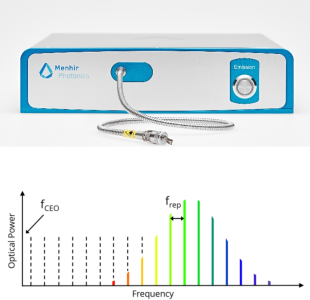Towards high-performance space-grade frequency-combs

This project aim was to make steps towards a demonstrator for a fully stabilized frequency comb, with the ultimate goal of creating a space-grade version. Such a system is essential for advancing timing and frequency distribution in space technology and enhancing Galileo satellites. Transitioning from electronics to photonics promises to significantly boost the accuracy and precision of satellite clocks, leading to heightened data transfer security, improved telecom performance, resistance to jamming, and more accurate greenhouse gases detection. The cornerstone of this "photonics precision" is the frequency comb. The project focuses on creating a novel f-to-2f stabilization tool compatible with Menhir Photonics' ultrafast lasers. This solution will be showcased to potential customers, allowing for precise evaluation of their needs and requirements for future products, both on the ground and in space missions. The project will enable Menhir Photonics to offer unique selling propositions, paving the way for commercialization and a larger share in the evolving photonics metrology market. In addition to their space-qualified lasers, the project will also demonstrate a space-compatible f-to-2f metrology system. The project's development will result in a highly reliable ground-based demonstrator designed for low complexity, low power consumption, and high robustness. Key achievements in this project include the minimization of noise levels in the laser unit, the definition of specific parameters for the f-to-2f interferometer, the specification of the Comb Offset Stabilization Module (COSMO) to mitigate AM-PM coupling, the amplification of femtosecond pulses, and a clear understanding of the fCEO frequency dependency to other laser parameters. Long-term monitoring of fCEO frequency changes has also been conducted, with an emphasis on temperature-induced refractive index variations and beam pointing adjustments within the cavity. The project opens up significant market potential for frequency combs, with applications spanning both space and non-space domains, including navigation, aircraft radar, military radar, and satellite communications. The frequency comb has received validation from multiple potential customers, setting the stage for the development of a ruggedized system that can be seamlessly integrated into existing technology
